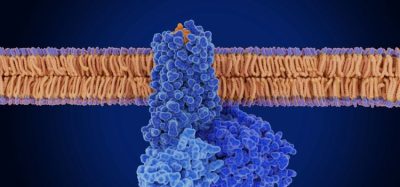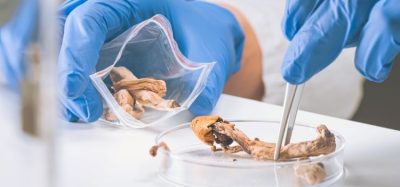Nexviazyme® improves respiration and mobility long-term in Pompe disease patients
Posted: 10 February 2022 | Hannah Balfour (European Pharmaceutical Review) | No comments yet
Two-year data shows Pompe disease patients treated with Nexviazyme® (avalglucosidase alfa) have sustained improvements in respiratory function and mobility.


Sanofi has announced that patients living with late-onset Pompe disease (LOPD) had sustained improvements in respiratory function and mobility when taking Nexviazyme® (avalglucosidase alfa).
Pompe disease is a rare inherited disorder in which glycogen builds up in the cells because of a deficiency in the acid alpha-glucosidase (GAA) enzyme caused by variations in the GAA gene. Nexviazyme is an enzyme replacement therapy (ERT) designed to specifically target the mannose-6-phosphate receptor, the key pathway for cellular uptake of ERT in Pompe disease.
Sanofi will be presenting results from two studies of Nexviazyme at WORLDSymposiumTM 2022: the analysis of the open-label, long-term extension of the randomised, double-blind, Phase III COMET trial; and Phase II Mini-COMET study long-term extension results, as well as the Phase III Baby-COMET trial methodology.
Phase III COMET extension
In COMET (NCT02782741), 100 previously untreated LOPD patients were randomised to receive 20 mg/kg or alglucosidase alfa 20 mg/kg intravenous infusion every two weeks for 49 weeks. In the extension patients who had initially received Nexviazyme continued their treatment, while patients who were previously treated with alglucosidase alfa switched to Nexviazyme 20 mg/kg.
Over the 97 weeks, there was sustained treatment effect with Nexviazyme, along with stabilisation of treatment effect in patients switching from alglucosidase alfa in respiratory function (measured by forced vital capacity [FVC] percent-predicted) and walking distance (measured by the six-minute walk test [6MWT]).
After nearly two years, changes (Least squares mean (LS mean) SE) from baseline at week 97 showed:
- Treatment with Nexviazyme in both the primary analysis and extension periods led to a 2.65 (1.05) point improvement in FVC percent-predicted compared to baseline. Patients who were treated with Nexviazyme only during the extension period showed a 0.36 (1.12) point improvement compared to baseline.
- Patients who were treated with Nexviazyme during both the primary analysis and extension periods experienced an average increase of 18.6 (12.01) meters in walking distance as measured by the 6MWT compared with the distance walked at baseline. Patients who were treated with Nexviazyme only during the extension period showed an average increase of 4.56 (12.44) meters from baseline.
The safety profile was comparable between both treatment arms (those treated with Nexviazyme throughout the study and those switching to treatment with Nexviazyme). No new safety signals were observed in patients who switched from alglucosidase alfa to Nexviazyme during the extension period. Across both groups, five individuals discontinued treatment during the extension period due to adverse events (AEs), including ocular hyperemia, erythema, urticaria, respiratory distress, acute myocardial infarction and pancreatic adenocarcinoma. Six participants experienced serious treatment-emergent adverse reactions potentially related to therapy.
Phase II Mini-COMET extension
The Phase 2 Mini-COMET trial (NCT03019406) was an open-label, ascending-dose, three-cohort study evaluating the safety and efficacy of Nexviazyme in patients under 18 years of age with infantile-onset Pompe disease (IOPD) who had previously received alglucosidase alfa for six or more months and showed either a suboptimal response or a clinical decline.
The three cohorts were:
- 20 mg/kg of Nexviazyme every two weeks (six patients)
- 40 mg/kg of Nexviazyme every two weeks (five patients), and
- randomised to Nexviazyme 40 mg/kg every two weeks (five patients) or alglucosidase alfa at their pre-enrollment stable dose (six patients).
All 22 participants entered an extension period to receive up to 40 mg/kg of Nexviazyme every two weeks. In the extensions period, the most commonly reported treatment-emergent AEs were mild to moderate in severity and included rashes (eight participants); falls, pneumonia and pyrexia (seven participants each); headache and upper respiratory tract infections (six participants each); and vomiting (five participants). There were no serious or severe treatment-related AEs or deaths.
The higher Nexviazyme dose (40 mg/kg every two weeks) had no increased safety risk seen in participants who switched from alglucosidase alfa to Nexviazyme.
After two years (at week 97), results showed that patients treated with Nexviazyme showed stable or improved motor function as measured by gross motor function measure (GMFM-88), quick motor function test (QMFT) total percent score, and Pompe-PEDI (Pediatric Evaluation of Disability Index) Functional Skills Scale. Additionally, all participants had a left ventricle mass z-score (LVMZ) score within normal range.
Related topics
Clinical Development, Clinical Trials, Drug Development, Drug Safety, Drug Targets, Genomics, Research & Development (R&D), Therapeutics









